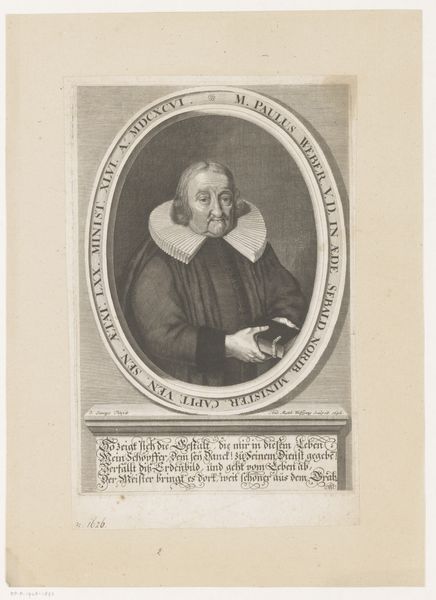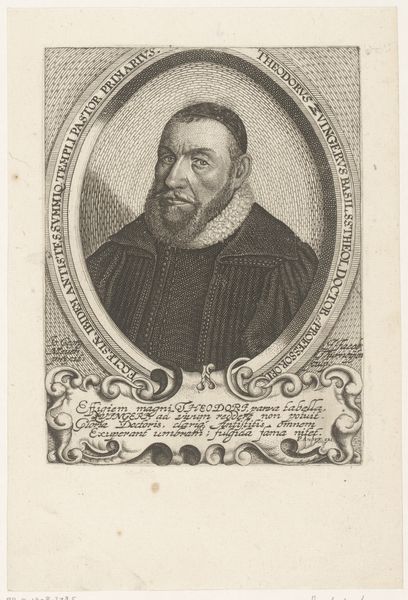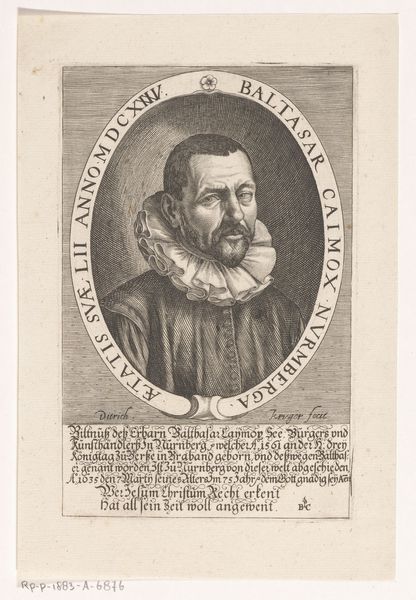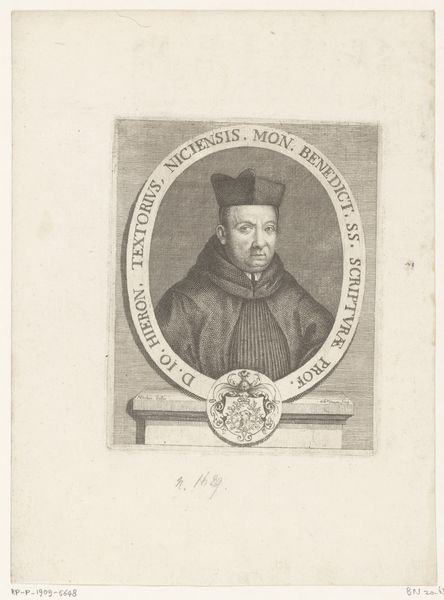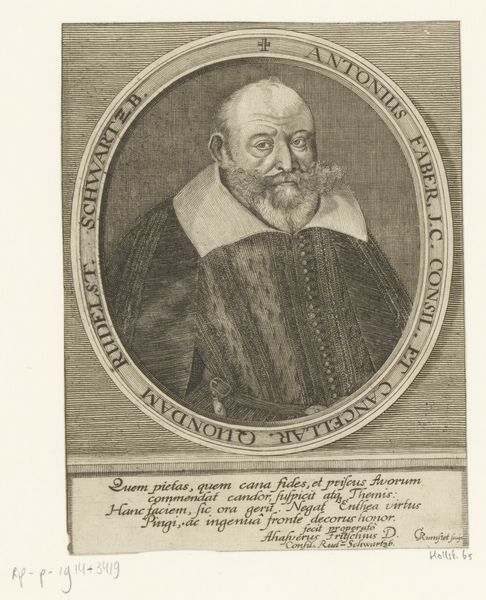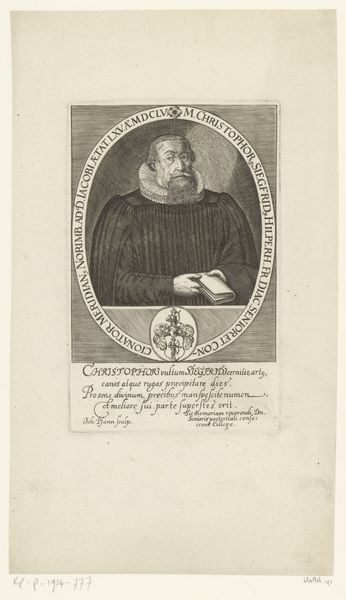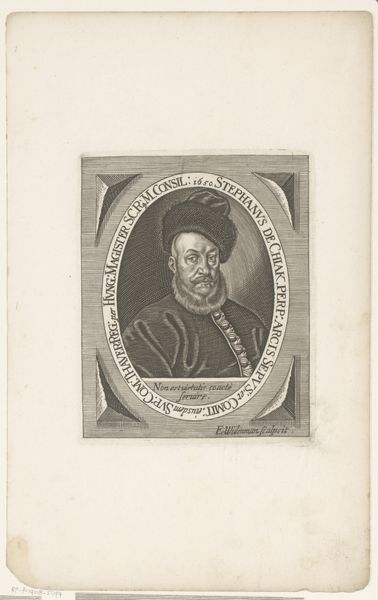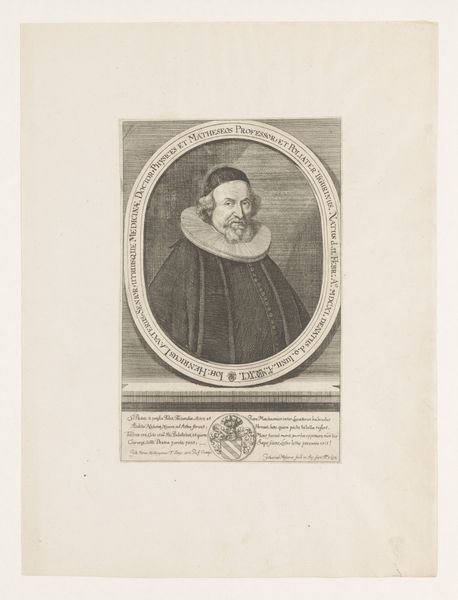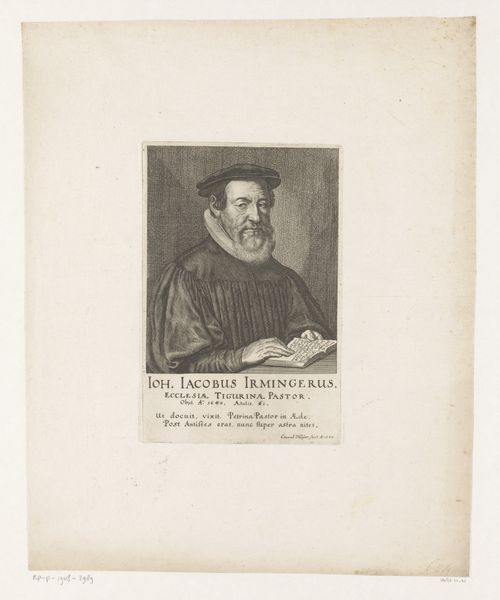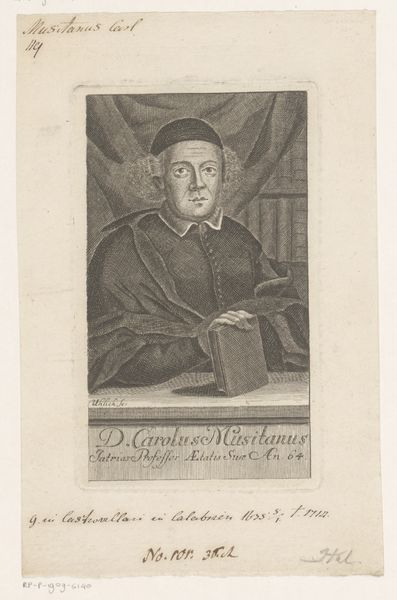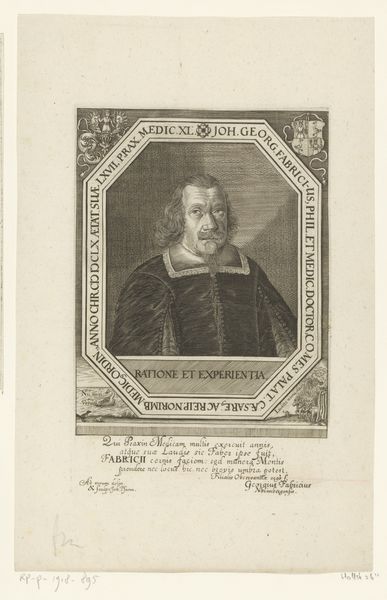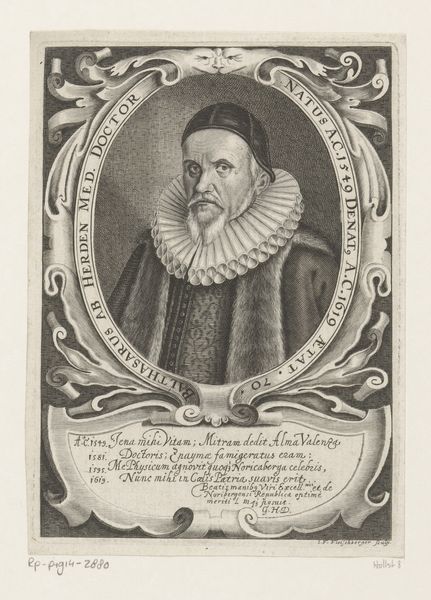
engraving
#
portrait
#
baroque
#
old engraving style
#
line
#
engraving
Dimensions: height 200 mm, width 143 mm
Copyright: Rijks Museum: Open Domain
Christian Fritzsch made this print, “Portret van Andreas Pouchenius,” sometime in the 18th century. At this time, portraiture was an important tool for communicating status and identity. Here, Andreas Pouchenius is identified as the third superintendent in Lübeck. This was a time when religious identity was a central aspect of social and political life. Portraits of religious figures were not just about capturing a likeness, but about presenting the individual as a figure of authority and moral standing. Notice how the portrait is framed within an oval, set against a patterned background, with the Pouchenius family crest displayed in the upper-left corner. Pouchenius is depicted holding a book, a symbol of knowledge and piety. These elements work together to communicate the sitter's identity. How does this image uphold or challenge the traditional representations of power and status of the time? While this is a rather straightforward portrait, I wonder how it would be different if the sitter were a woman.
Comments
No comments
Be the first to comment and join the conversation on the ultimate creative platform.

